Unsafe Load Causes Near-Miss Accident on M20
- Details
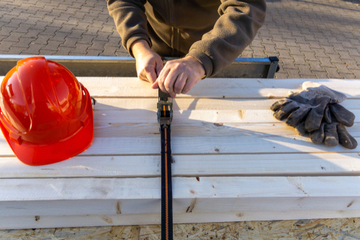 The sight of mattresses flying off the back of a truck travelling at speed on the M20 looks like something out of a cartoon car chase, but this is what happened recently on the M20 near Ashford in Kent.
The sight of mattresses flying off the back of a truck travelling at speed on the M20 looks like something out of a cartoon car chase, but this is what happened recently on the M20 near Ashford in Kent.
The near-miss incident, reported in the Metro, could easily have ended in tragedy, but, miraculously, the drivers travelling behind the truck were able to dodge the flying objects and no-one was hurt.
Unsafe loads and the dangers to other road users
Unsafe loads are one of many driving offences that can lead to accidents on the nation's roads. An unsafe load could be a van that is badly loaded (e.g. unsafe weight distribution or goods and materials not being secured properly) or vans which are overloaded (i.e. exceeding the maximum permitted axle weight, the gross vehicle weight and/or the gross train weight).
An unsafe load can make the vehicle difficult to handle, prone to tipping over and/or swerving, have a detrimental effect on the braking capabilities and stopping distances, and cause excess wear and tear which can, over time, make the vehicle unfit to drive.
In 2020 the Driver and Vehicle Standards Agency (DVSA) updated the guidance on vehicle load security to cover the following points:
- Load securing basics – including good practice, correct vehicle loading technique, and choosing the best securing and restraint methods.
- Responsibility for load securing
- Consequences of poor load securing
- Enforcement
- Types of vehicles
- Types of loads
- Load securing solutions
If a vehicle is deemed by police to be in a dangerous condition due to an unsafe load either because of the condition of the vehicle, its suitability for the load and/or or the weight, distribution, packing and adjustment of the load, a court can hand down a penalty of 3 penalty points and a licence endorsement for the driver, as well as an unlimited fine.
Further legal action may be taken if the condition of the van and its load caused a road traffic accident.
An unsafe load will invalidate your van insurance
A motoring offence for an unsafe load is likely to invalidate your van insurance and, if there has been an accident, could mean that the insurance company does not pay out for damage to you or your vehicle.
At iVan we can help you find some of the cheapest van insurance around, including any driver van insurance and fleet insurance. If you've gone to the trouble of finding great van insurance, we hope you'll do the same when loading your van.
Commercial Drivers to See £20m Investment in Roadside Facilities
- Details
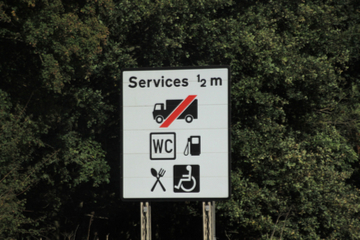 Commercial drivers, including van drivers, lorry drivers and HGV drivers, are to benefit from a £20 million cash injection into the improvement of roadside facilities.
Commercial drivers, including van drivers, lorry drivers and HGV drivers, are to benefit from a £20 million cash injection into the improvement of roadside facilities.
The funding will be taken from the National Highways Users and Communities Fund, a five-year £936 million pot focused on improving four designated areas: Safety and Congestion, Environment and Wellbeing, Users and Communities, and Innovation and Modernisation.
Better facilities for commercial drivers
The aim of the facilities funding will be to boost driver welfare and, hopefully, assist in recruitment during this time of driver shortage in the global HGV sector.
Roadside service operators can apply for a grant from the fund to improve security, lighting, shower and eating facilities, as well as for the improvement of parking areas for HGV and commercial vehicle drivers.
Chief Executive, Nick Harris, said that National Highways is committed to helping all road users reach their destination safely and it is hoped that the £20 million will "go some way to achieving this goal".
Baroness Vere, Roads Minister, said that commercial drivers play a key role in the nation's economy and it is vital that they are comfortable and safe when they stop for rest and recuperation. She added that this was the reason behind the latest funding to "ramp up" security and improve facilities for commercial drivers.
Head of policy engagement at Logistics UK, Mags Simpson said that lorry drivers are legally required to take regular rest breaks and are mandated to make overnight stops, so it is vital that these key workers have access to "a safe place to take these breaks" and are able to use good bathroom and catering facilities.
Van insurance for commercial drivers
While these improvements are largely aimed at HGV drivers, it is recognised that delivery drivers of smaller commercial vehicles are also the backbone of the nation – with home deliveries becoming the shopping option of choice for many people in recent times, and tradespeople also being required to travel longer distances to carry out their work.
So, it is hoped that they will also benefit from improved roadside services.
Here at iVan we are also striving to ensure that we can provide van drivers with great value van insurance, whether they need any driver van insurance, fleet van insurance, or just the best deal on cheap van insurance.
Contact us today to see if we can help you save money and get the most suitable cover for your commercial driving needs.
Van Safety Tech in 2022 – Important Innovations to Look Out For
- Details
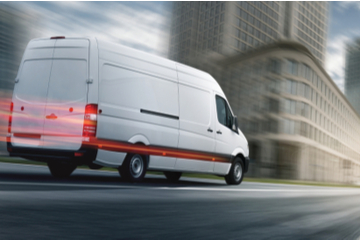 Most van owners know that the price of their van insurance varies based on a number of factors, including the make, model and value of the van, what it's going to be used for, where the owner lives and the driving history of the person or persons who will be driving it.
Most van owners know that the price of their van insurance varies based on a number of factors, including the make, model and value of the van, what it's going to be used for, where the owner lives and the driving history of the person or persons who will be driving it.
For example, van insurance quotes are generally more expensive if you have a city address or if you are under the age of 25.
One important factor that will be used to calculate your van insurance is the safety features that your van possesses. For instance, older models with very basic safety tech might be more expensive to insure than a newer model with plenty of features that will keep the driver and other road users safe, even though the value of the older van is less.
Here we look at some of the latest safety tech being included in vans, trucks and pickups. And we warn you, some of it is pretty nifty!
Adaptive Cruise Control
Van drivers who do a lot of motorway miles may use cruise control to give their gas foot a rest; however, with basic cruise control, the driver has to step in when approaching a slower-moving vehicle.
Adaptive cruise control uses forward-facing radar to sense when the van is approaching a slower-moving vehicle, which activates the brakes to reduce the speed automatically. And the really clever part is that when the driver pulls out to overtake, the system resets itself back to the pre-set speed once it senses that the road ahead is clear.
Autonomous Emergency Braking
Forward-facing radar technology detects when the van is in imminent danger of collision. A warning alarm is set off to alert the driver and, if the brakes are not activated swiftly enough by the driver, the system automatically applies the brakes. Some systems will bring the vehicle to a standstill, while others will need the driver to apply pressure to the brakes to bring the vehicle to a complete standstill
Blind Spot Assist
To help with the typical lack of side and rear visibility in vans, some manufacturers are adding technology that will detect when another vehicle is in the 'blind spot'. Radar technology 'senses' when something is close by and alerts the driver with visual or audio prompts.
Crosswind Assist
With more and more severe storms and high-wind weather warnings around, anything that makes a high-sided vehicle a little safer to drive is a must-have piece of kit. Crosswind assist activates when the van is travelling above a certain speed, such as 50mph. Sensors evaluate the direction of the van and if it begins to veer sideways the system activates to counteract the effects of the crosswind.
There are two types of Crosswind Assist technology: one system uses braking on one side of the vehicle to pull the van back onto a straight course, while the other uses the van's integral power steering to autonomously counteract the change of direction through the steering.
Lane Keeping Assist
While most van drivers would never admit to it, most of us have witnessed the vehicle in front of us drifting off line and across the white lines on the road. Lane Keeping Assist technology automatically detects whether the van is crossing a lane line and emits an alert to warn the driver.
Some systems also include steering assist to autonomously correct the direction of travel. To stop the alerts from occurring when overtaking, the system disables whenever the indicators are in operation.
Trailer sway control
For van drivers who tow trailers the thought of it swaying, or 'snaking' as you fight to regain control, is one of those nightmare situations you hope will never happen to you. Trailer sway control technology is totally awe-inspiring as it detects the 'yaw-rate' (rotational speed around a vertical axis) and uses the van's electronic stability programme to stabilise the snaking by controlling the speed and braking.
Check out your van tech for cheaper van insurance
Anything that reduces the likelihood of accidents and injury is a good thing in the eyes of van insurance providers, so buying a van with extra safety technology will ultimately help you get a better deal on your cover, whether it's any driver van insurance, fleet van insurance or under-25 van insurance.
And while you're checking out your van tech, you should check out the van insurance prices that iVan can offer.
Get a quote today.
Ford Vans are Turning Electric
- Details
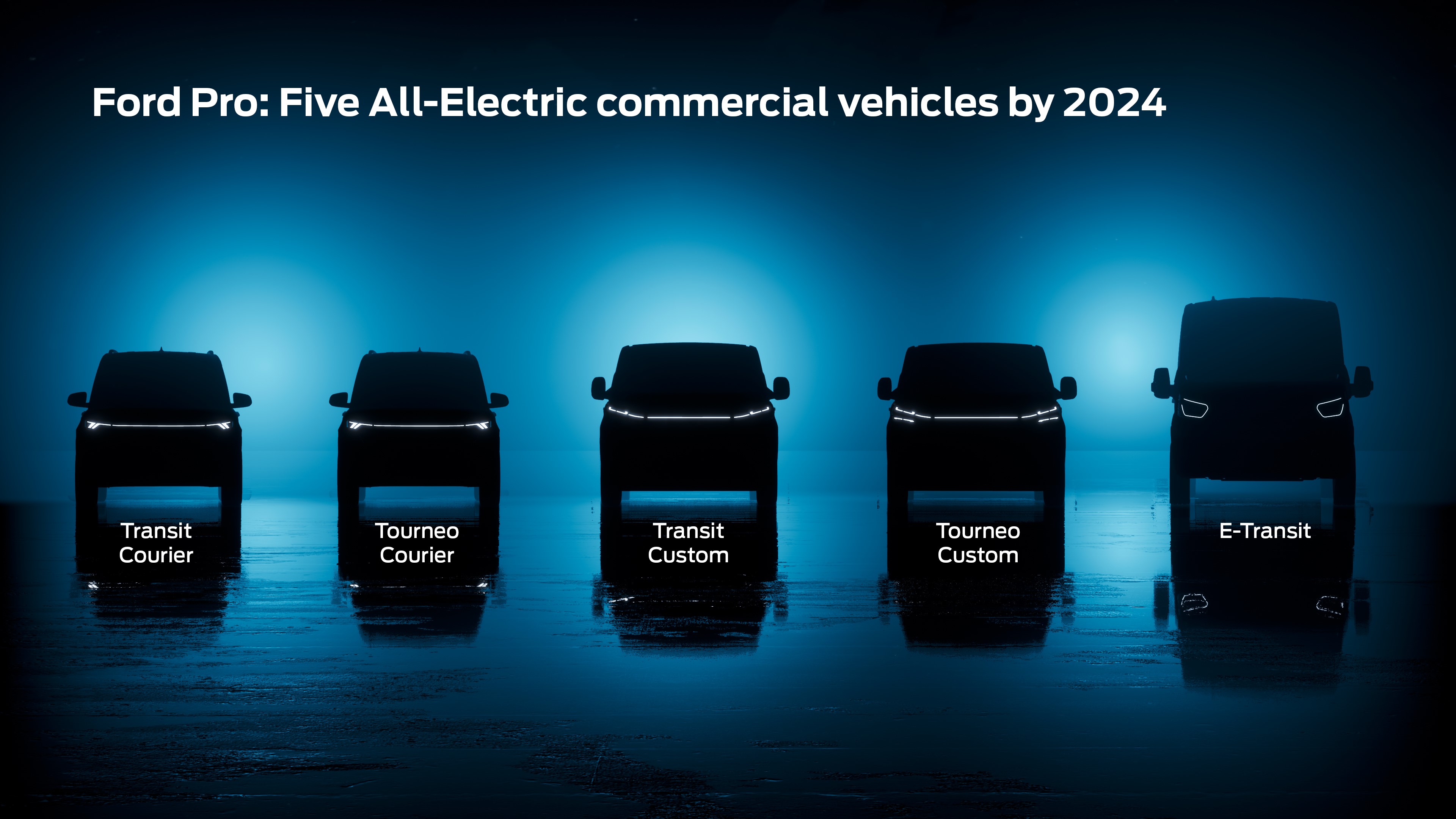 The more people who drive a particular type of van, the easier and cheaper it will be to get replacement parts and have it repaired after an accident. As parts and repair costs are one of the main factors in the price of van insurance, one of the ways you can keep the price of your van insurance down is to buy a popular van.
The more people who drive a particular type of van, the easier and cheaper it will be to get replacement parts and have it repaired after an accident. As parts and repair costs are one of the main factors in the price of van insurance, one of the ways you can keep the price of your van insurance down is to buy a popular van.
The cost of insurance for electric vans has largely been more expensive than conventionally-fuelled vans because the technology is still fairly new and parts and repair costs are likely to take some time to become comparable with petrol and diesel vans.
So, when the manufacturer of one of the world's most popular vans announces a range of four new electric vans for 2024, it's time to start thinking that e-vans will soon be mainstream.
Ford announces new range of electric vans
The all-new Transit Custom one-tonne electric van will be available in 2023 alongside the electric Tourneo Custom multi-purpose vehicle. Both will join the full-size E-Transit, which was Ford's first all-electric commercial vehicle.
Then, the next-gen Transit Courier and Tourneo Courier MPV will come online in 2024 to give Ford customers five choices of electric van.
There will be various options of all-electric powertrain, mild-hybrid diesel and plug-in hybrid models across the range, with Ford aiming to offer a full commercial vehicle range capable of zero emissions by 2024.
What's more, Ford has gone on record saying they wish to "achieve zero emissions for all vehicle sales and carbon neutrality across its European footprint of facilities, logistics and suppliers by 2035".
Insuring your electric van
As more and more business owners think about sustainability and the government pushes forward with its goals of lower emissions, the rise of electric vans is inevitable.
So, being able to find cheap electric van insurance will become easier. And, if you're weighing up whether to buy an electric van based on the running costs, there are other money saving factors such as:
- the "plug-in grant": although currently, the Ford Transit Custom Plug-In Hybrid does not qualify for the PIVG
- reduced fuel costs: certain manufacturers suggest their electric vans cost as little as 2p per mile in charging costs
- vehicle tax exemption: zero emissions means no vehicle tax (although your electric van must still be registered)
If you need a quote for electric van insurance, any driver van insurance or fleet van insurance, contact iVan today – powered by City Insurance, we are the van insurance specialists.
Driving a Van in Strong Winds – Our Ten Top Tips
- Details
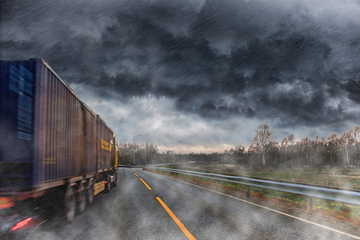 The recent weather phenomenon of three storms hitting the UK in just a few days is a reminder to us all that so-called freak weather conditions are now less freaky and something we should all prepare for in our everyday lives.
The recent weather phenomenon of three storms hitting the UK in just a few days is a reminder to us all that so-called freak weather conditions are now less freaky and something we should all prepare for in our everyday lives.
Storms Dudley, Eunice, and Franklin formed a "cluster" of bad weather which struck right across the UK. Record-breaking wind gusts and torrential rainfall brought danger to life and multiple red warnings from the Met Office.
Our advice would always be to stay home if you can when high winds affect travel, especially if you are driving a larger van, but we understand that some people have to go out in such conditions and sometimes changes in the weather can occur quickly and unexpectedly.
Top tips for driving a van in high winds
- Plan ahead: check the weather forecast, see if you could start your journey earlier or later to avoid high winds.
- Use main roads whenever you can: rural roads may be blocked by debris and there could be danger to life from falling trees.
- Be aware of flying debris: branches and other debris blown about in high winds can cause danger to life if it strikes your van.
- Keep your speed down: and stay focused on the road ahead.
- Stay in control: keep two hands on the steering wheel in the ten to two position as strong gusts can cause your van to shake and swerve.
- Be prepared for side winds: going past gaps in trees and buildings, and going across bridges, are danger points for van drivers.
- Make room: in gusty conditions, you should make sure there is room on either side of your vehicle in case it is blown sideways – give other road users plenty of room.
- Watch out for high-sided vehicles: larger vehicles can create side winds when they overtake. Leave plenty of room when you overtake a high-sided vehicle.
- Look out for roadside warning signs: National Highways (formerly Highways England) uses fixed and electronic signs (and occasionally wind socks) to warn of possible high winds and side winds.
- Be ready for road closures: National Highways may close certain roads for certain types of vehicles in windy conditions.
High-sided vehicles, such as box vans and modified transit vans, are vulnerable in high winds, particularly when they are empty.
Van drivers are vulnerable in high winds
At least three people who were travelling in vans during the recent storms have died and another is seriously injured.
Your van insurance can help to pay for repairs to your vehicle if you suffer an accident, but it can't turn back the clock to prevent physical injury and harm.
High winds are dangerous for van drivers.








